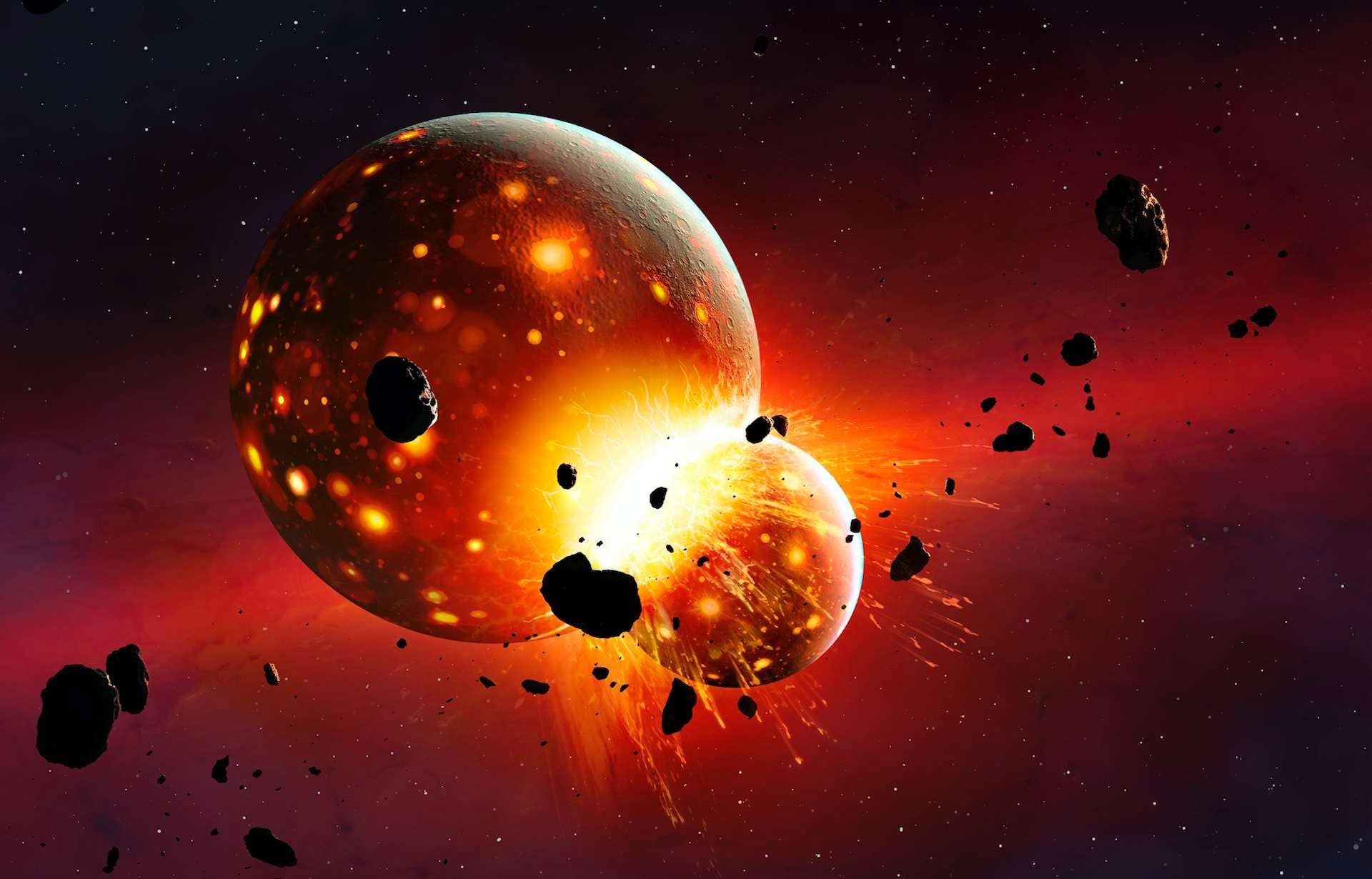
Massive Remnants of an Alien World are Hidden Near the Earth’s Core, Says Study
Article by Becky Ferreira March 25, 2021 (vice.com)
• Mikhail Zolotov, a planetary geochemist at Arizona State University, is an advocate of the so-called “giant impact hypothesis” that proposes that the Moon was formed when a planet called ‘Theia’ collide with the Earth some 4.5 billion years ago when the Earth was still forming. The impact spewed enormous volumes of planetary debris into space that eventually accumulated into the natural satellite we know as the Moon.
• A 2019 study led by ASU astrophysicist Steve Desch involved an in-depth analysis of Moon rocks returned to Earth from the Apollo missions. The research suggested that if the composition of the Moon was the same as that of the rogue planet Theia, then Theia was about four times larger than Mars, with low levels of moisture and an iron-rich mantle that was about two to three percent denser than Earth’s mantle.
• Qian Yuan and some of his colleagues studying geological sciences at Arizona State University were focusing on a pair of highly peculiar subterranean zones known as ‘large low-shear-velocity provinces’ – or ‘LLSVPs’. Located more than 1,000 miles under under the Pacific Ocean and under West Africa, these continent-sized LLSVPs – hundreds of miles high and thousands of miles across – showed up as ‘blobs’ on seismic density readouts. The seismic data indicated that these LLSVP blobs’ mass composition are two to three percent more dense than the surrounding mantle.
• It struck Yuan that having similar densities, the Moon and the subterranean blobs could both have come from the same ancient collision involving the planet Theia. Yuan did some quick calculations and confirmed that the total mass of the Moon, together with the LLSVP blobs, almost perfectly matches with a planet the size of Mars. Yuan and his team then created geodynamical models of their hypothesis which they presented it to the 52nd Lunar and Planetary Science Conference 2021, held virtually in mid-March. Steve Desch was so excited about the hypothesis that he co-authored the new research study.
• Actually, Theia would need to have been bigger than Mars because a lot of this mantle material would be lost to space in the aftermath of the crash. “You will lose some material during the impact, for sure,” Yuan said. “You cannot transfer Theia’s mantle whole.”
• Right now, this all remains hypothetical, but Yuan is optimistic that there are ways to build on the existing evidence and perhaps prove that the LLSVPs have an extraterrestrial origin. For instance, scientists could get their hands on pristine samples of the Moon’s mantle from an exposed crater in the lunar South Pole, to compare its composition to the makeup of the LLSVPs. “If people can find some chemical relationship between the lunar mantle materials with the LLSVPs, it may suggest they have the same ancestor: Theia,” Yuan said. “The LLSVPs are thought to… have noble gas isotopes,” he continued. “If the mantle rocks of the Moon also have similar noble gas isotopes, I think that’s the final task for our hypothesis.”

Two gigantic chunks of material lurking deep under the surface of Earth might be remnants of an alien world called Theia that violently collided with our infant planet in an ancient impact that created the Moon.
remnants of an alien world called Theia that violently collided with our infant planet in an ancient impact that created the Moon.
That sentence may sound like the synopsis for a sci-fi epic, but it’s actually a new hypothesis proposed by scientists in a presentation at the 52nd Lunar and Planetary Science Conference 2021, which was held virtually last week.
A team led by Qian Yuan, a PhD student studying geological sciences at Arizona State University, suggests that two mysteriously dense zones located more than 1,000 miles under Earth’s surface are “left-over Theia mantle materials,” according to the presentation summary.


Yuan and his colleagues back up this trippy idea with geodynamical models as well as evidence collected about these subterranean zones, which are known as large low-shear-velocity provinces (LLSVPs), or more informally as the “blobs.” Located under the Pacific Ocean and West Africa, these continent-sized LLSVPs are hundreds of miles high and thousands of miles across, making them the most massive formations in Earth’s interior.
“You could say that these are the biggest and largest meteorites, if they are mostly Theia’s mantle,” said Yuan in a call. “It’s very cool.”
Yuan first started thinking about the possibility that the blobs might have been extraterrestrially punched into Earth’s interior during a class about the so-called “giant impact hypothesis” taught by Mikhail Zolotov, a planetary geochemist at ASU.
This hypothesis proposes that the Moon was formed in the fallout of a catastrophic collision some 4.5 billion years ago. Earth had barely been born before another planet crashed into it, spewing enormous volumes of planetary debris into space that eventually accumulated into the radiant natural satellite that graces our skies today. Scientists have generally estimated that this bygone planet, named Theia after the mother of a Greek lunar goddess, was about the size of Mars, but some models suggest it was both smaller and bigger than that scale.
FAIR USE NOTICE: This page contains copyrighted material the use of which has not been specifically authorized by the copyright owner. ExoNews.org distributes this material for the purpose of news reporting, educational research, comment and criticism, constituting Fair Use under 17 U.S.C § 107. Please contact the Editor at ExoNews with any copyright issue.
'blobs', 'large low-shear-velocity provinces', “giant impact hypothesis”, 52nd Lunar and Planetary Science Conference 2021, Apollo missions, Arizona State University, Mikhail Zolotov, planet Theia, Qian Yuan, Steve Desch, The Moon